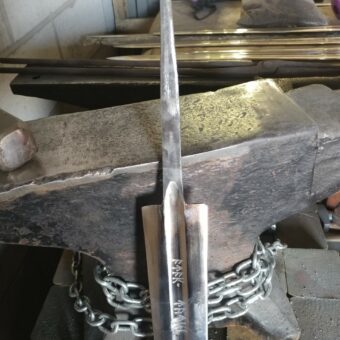

You will get the new character of an alien with greater ability to sustain in that situation and help you survive for the longer period of the time. When checking my profile for example Deepest Sword does not count as a Perfect Game anymore - despite me having every achievement. Let’s play with everyone and live crazy adventures using the controls shown below in the Deepest Sword game. It’s time to play these related games Advertisement. So, unique graphics are going to combine the 3D gameplay with the cartoons, to amuse you to own you and to give you a greater style of playing the game and much more.
#DEEPEST SWORD HOT ANDROID#
If you close your eyes, the subjectively felt weight will be in the 1/3rd closest to the hilt.You can play the Run 3 Unblocked via your Web browser, Android or iOS. With a linear taper, handling will always be less than optimal and many people try to correct things through the weight of the pommel which makes matters worse.Ī good blade will handle well without tiring the arm too much if you try it on its own without hilt, grip and pommel. The cross section at the hilt is big and drops significantly within the first 1/5th of the blade, then stays level for some time before dropping again before about a 1/3rd from the tip, then tapering out towards the point (see picture, a very nice Juan Martinez rapier blade from around 1600) Usually the cross section curve has a double S-shape.

This applies to all swords - two-handers, sideswords, rapiers, smallswords and others that are intended for proper fencing as described in the various treatises! (Meat cleavers like Pallasches and some cavalry sabers are exempt from this, there the momentum in swinging cuts is the focus of design) To get good handling in fencing, the cross section curve will be necessarily nonlinear, this implies a constantly changing bevel angle along the blade. In my research with original blades, which ranges from 15th to 18th century european blades, a constant bevel angle is a rare thing. It will feel lighter in the hand than a blade with a more constant distal taper. It also helps making the main body slightly more lean without loosing rigidity or resiliency and thus allows you to make a lighter blade.Ī blade with composite distal taper will be more agile and handle smoother. It is an effective strategy in dealing with blade stiffness in impact and bending stresses. It is a feature that on Japanese blades is known as "Fumbari" if I am not mistaken. However, the drastic drop in thickness at the base is a design feature that this blade shares with many other blades, not a result of corrosion, or mistakes in the making. The fuller can be made wider and the ridges on either side slightly thinner. It is rather common to see the area of the iron inlay being overground in some places. In this case the sword also had some iron inlay in the fuller. Corrosion naturally eats away thickness but it might also swell thickness in places by build up or delimitation. Secondly, a sword may suffer damage during use that affects also thickness, but this is rare.įinally and most importantly, the degree of corrosion plays a role. This is normally the case (some ☐.1 mm variation is typical). Many blades start out 4.5 - 5.5 mm.įirst of, the blade was not perfectly even in distal taper to begin with. This blade also has a fairly deep fuller. I might add that the base thickness on 6.8 is unusual thick. Total weight of this weapon is 1353 gram and a total length of 945 mm. Most measurements were taken in spots that were close to original surface.


The blade was not much thicker originally. The distal taper is not very even and part of this is from rust damage (=pits in the surface). If you plot this out as a graph you will see the trend of the distal taper conforming fairly well to the basic principle I outlined above. This holds true for most any type of sword. Thickness, cross section and distal taper of sword blades are the key features for the character and performance of the weapon. The info you find on the net is mostly inferred from ideas of what swords *should* be rather than facts. There is very little published on distal tapers. As a rule these blades taper both in width and thickness and it is worthwhile to spend some time to note just how they do this. The fact that it is mild should not be taken that it is unimportant. Migration and Viking period blades tend to have subtle distal tapers, but it is still rare to find blades without this.


 0 kommentar(er)
0 kommentar(er)
